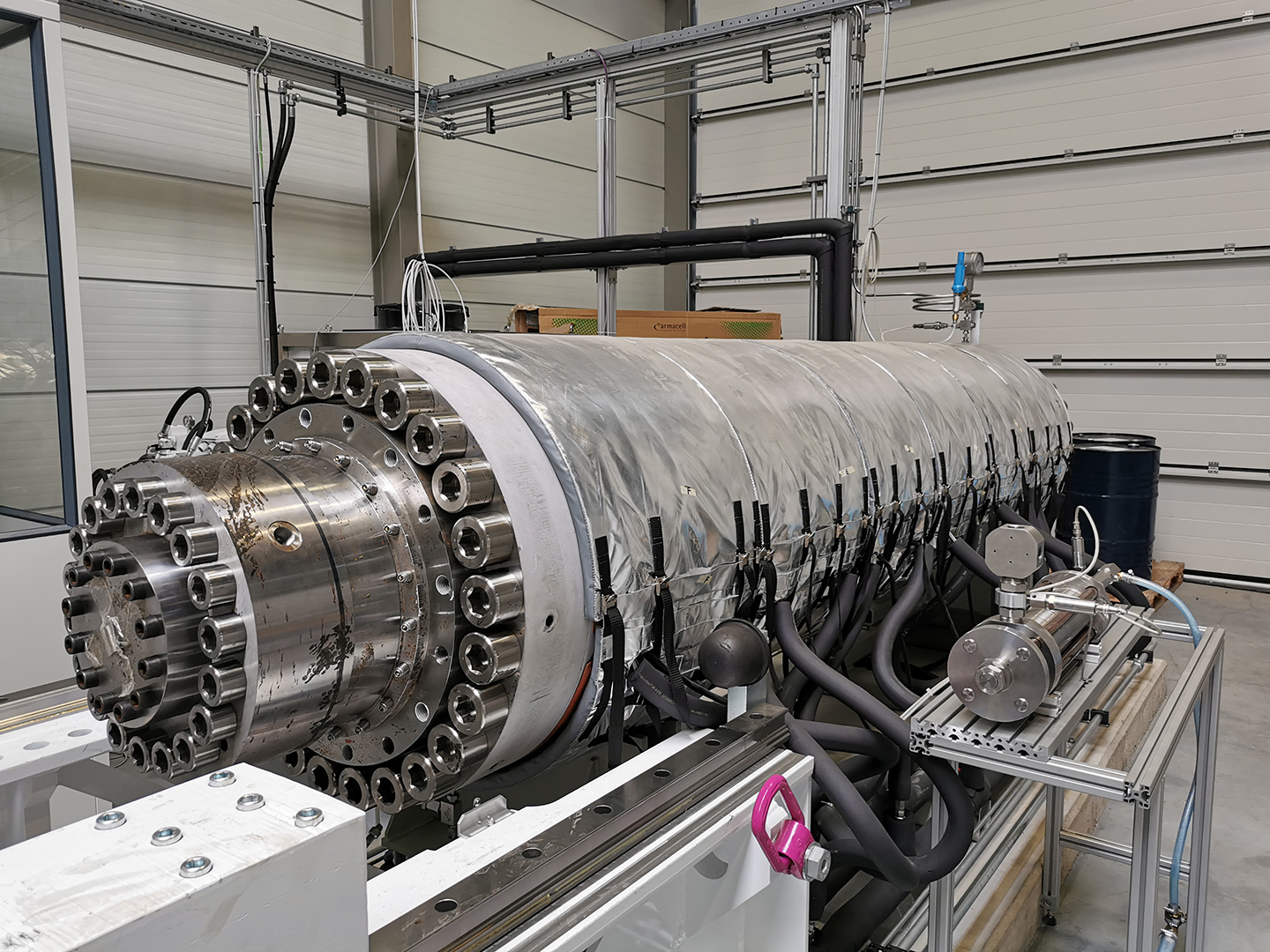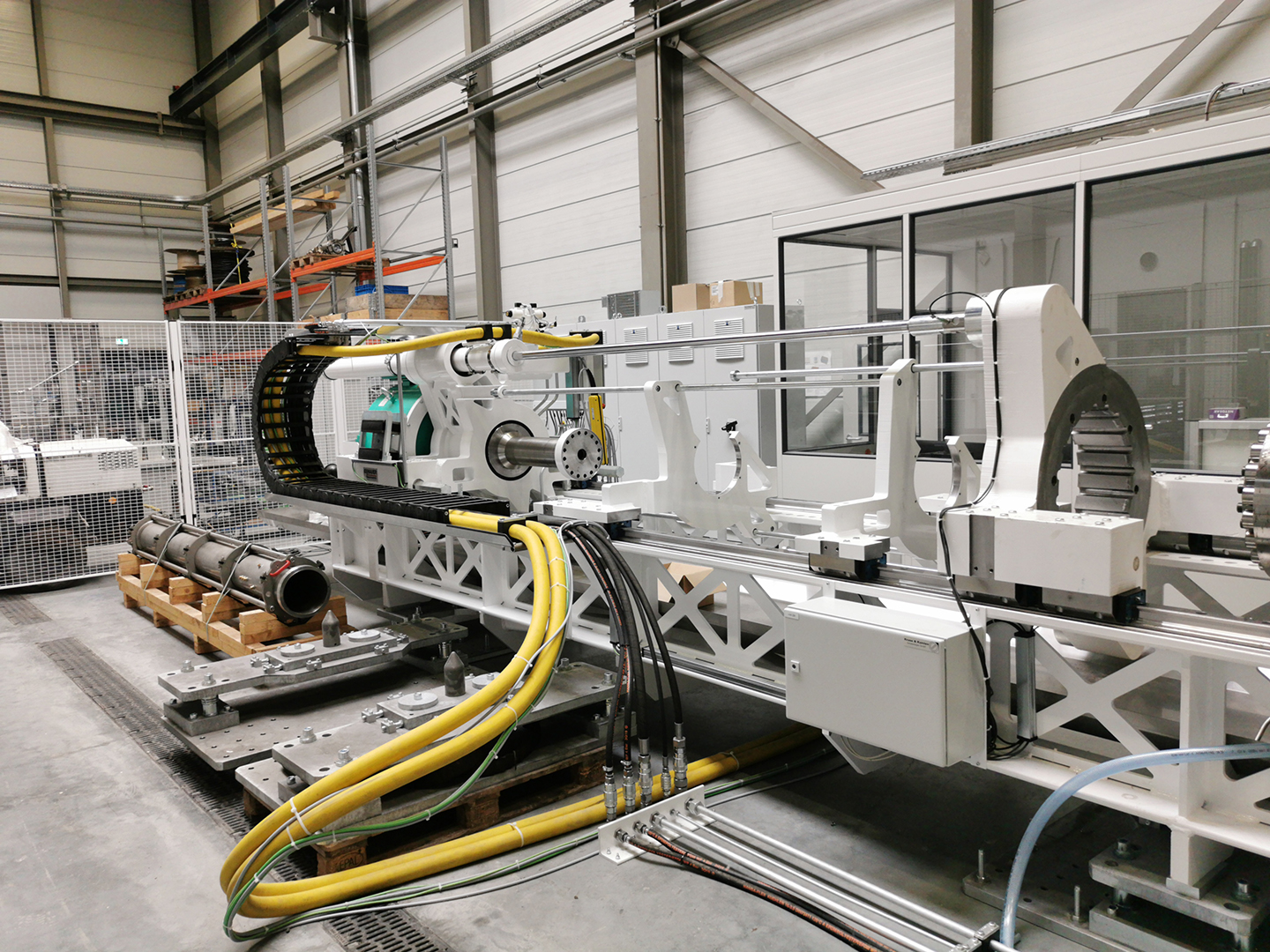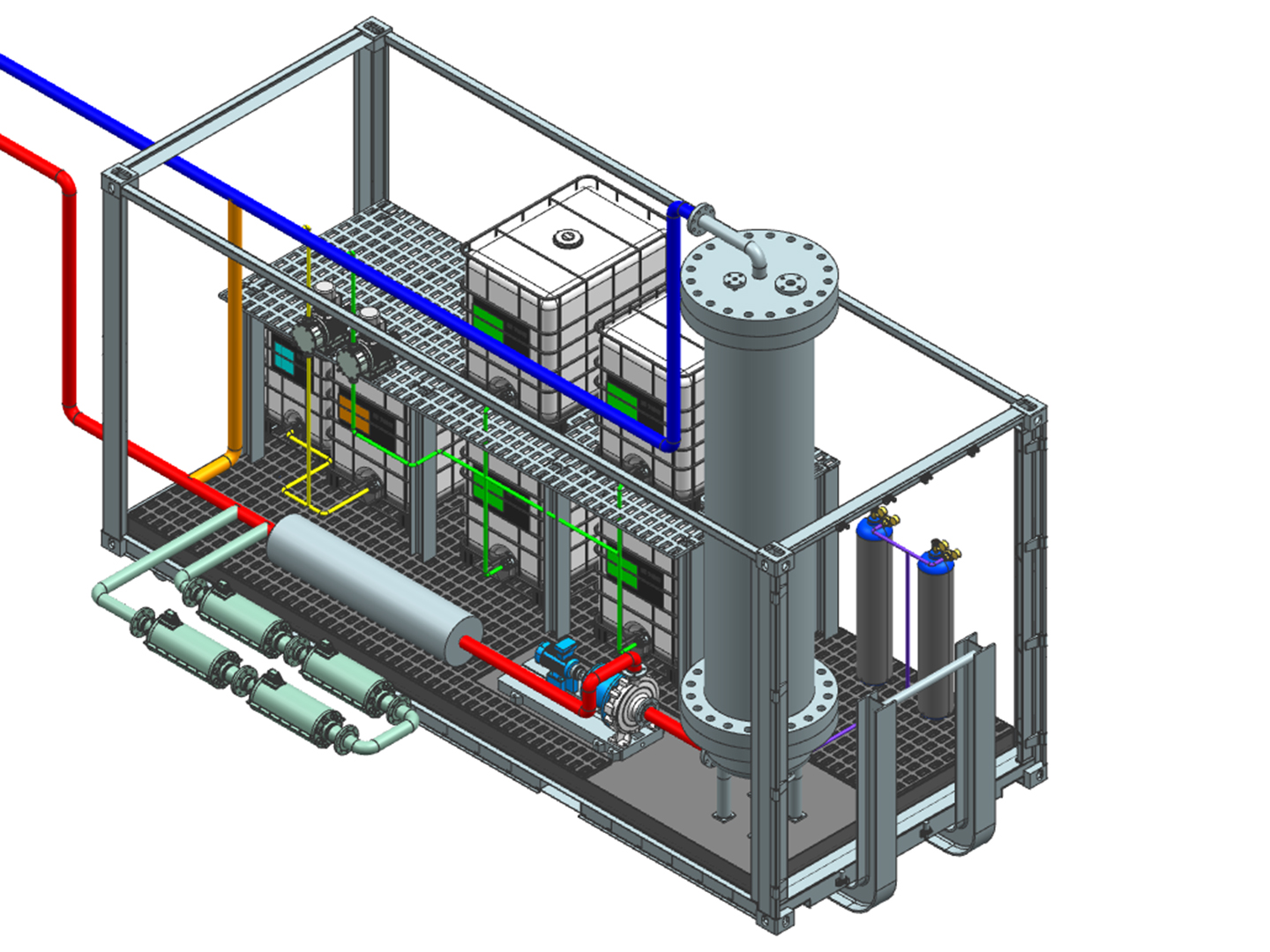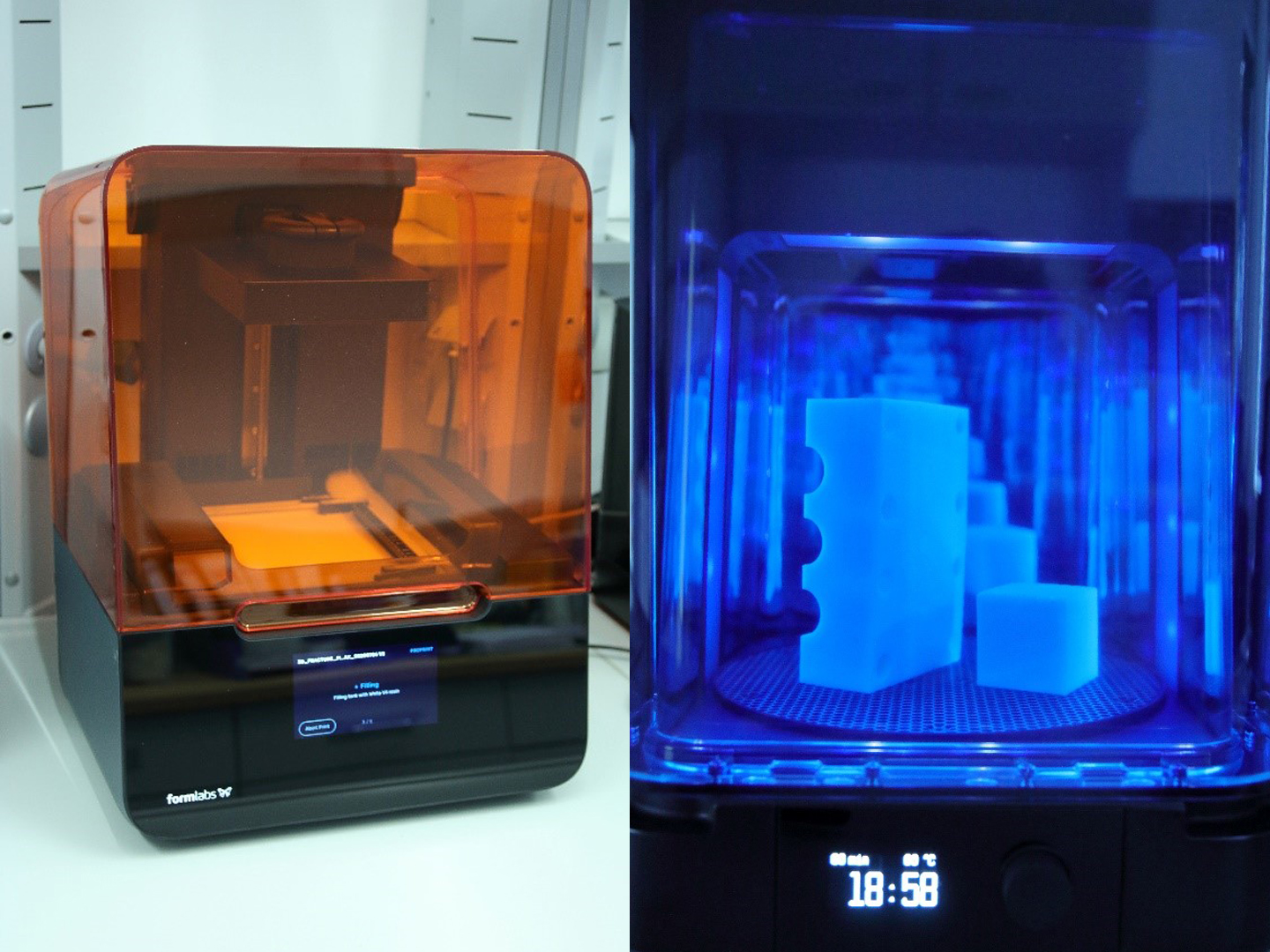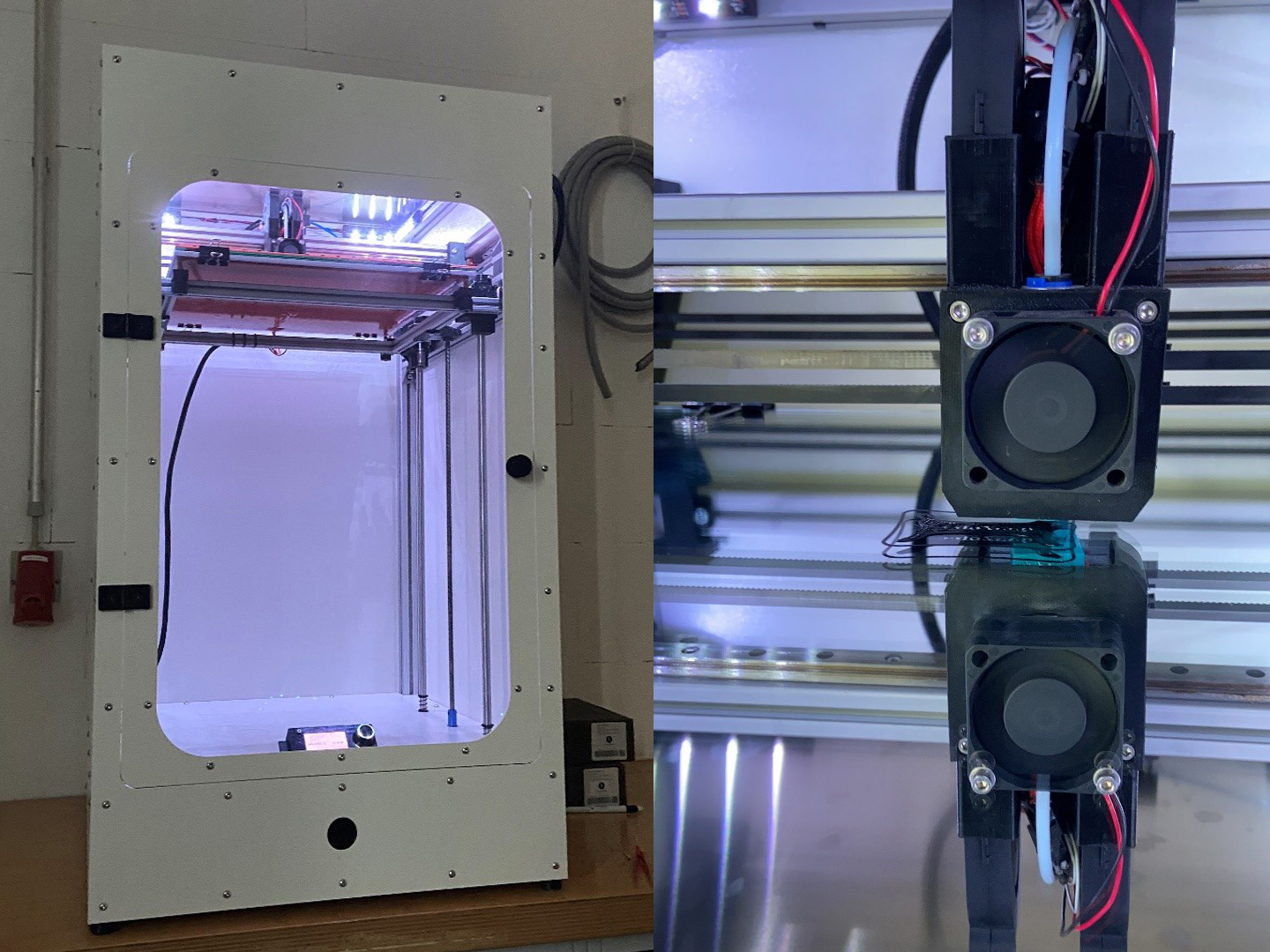In the geotechnology laboratory, experiments and analyses can be carried out on samples ranging in size from decimetres to metres. The infrastructure of this laboratory acts as a link between the laboratory and field scales and enables the gap to be closed for scaling findings from the Geoscience laboratory to the field scale. The central component of the laboratory is the match.BOGS (match-"borehole and geofluid simulator"), which makes it possible to physically simulate processes relevant to the careful development and sustainable use of geogenic resources under in-situ conditions. For this purpose, match.BOGS consists of three interlinked modules: i.BOGS, drill.BOGS and fluid.BOGS. The i.BOGS ("i" for "in-situ") represents an autoclave capable of exposing rock samples 3 m long and 25 cm in diameter to triaxial pressure and temperature conditions of depths up to 5 km (1250 bar and 180 °C). Alternatively, technical components such as pumps or measuring instruments can be tested and operated through special feedthroughs into the autoclave. Flow through the autoclave - even with corrosive fluids - is possible at a flow rate of up to approx. 10 l/s. Acoustic, optical and thermal sensors help to detect and quantify processes that are taking place. The drill.BOGS ("drill" for "drill drive") is the trainer's drill drive. It makes it possible to drill into the rock sample under reservoir conditions inside the i.BOGS using various drilling tools. Two hydraulic cylinders provide the necessary feed force of up to 400 kN. The continuously adjustable electric motor drives the drill rod with up to 12 kNm of torque. The installed measurement, control and regulation technology (MCR) enables fully automated drilling operations to be carried out with changing rock properties. By means of the fluid.BOGS ("fluid" for "fluid reactor"), synthetically produced geothermal fluids with a defined composition are to be provided on a pilot scale at controlled temperature, pressure or mass flow. These geofluids can be fed into the i.BOGS under pT reservoir conditions to study stimulation or flow-through processes in the reservoir or downhole. A flow loop within the fluid.BOGS will ensure precise control of all parameters.
The match.BOGS infrastructure will be complemented by smaller autoclave systems in which various hydraulic and mechanical drilling processes will be further developed on rock samples in the decimetre range at pressures up to 600 bar.
Geotechnology Laboratory
Workshops
The construction and safe operation of complex experimental setups often requires the adaptation of individual mechanical components. The Fraunhofer IEG operates various workshops for rapid implementation or prototype construction as well as for the production of spare parts or small series.
Mechanical workshop
The Fraunhofer IEG maintains a central workshop in which smaller mechanical tasks can be carried out and components can be built in order to work on experimental challenges quickly and accurately.
3D printing – A new technology for additive manufacturing processes at Fraunhofer IEG in Bochum
Since August 1, 2020, two 3D printers have been in use at the IEG’s facilities in Bochum to manufacture items such as prototypes and components. Additive manufacturing processes use polymer and resin-based materials. This allows plastic objects to be printed with various resolutions and sizes, for example to manufacture a new type of valve system (percussion system) for a fluid hammer in the GeoDrill project. The ability to build prototypes rapidly facilitates short prototype development cycles and means that spare parts or small series productions can be realized quickly for testing purposes.
Stereolithography 3D printing process
The technique of stereolithography (SLA) builds the workpiece up from a liquid bath of photopolymer. In this process, photocurable plastics are hardened by a laser in thin layers. The plastics are special photopolymers (synthetic or epoxy resins). The laser moves over an array of movable mirrors, hardening each layer in turn. To fix the component to the building platform, so-called support structures are necessary. In post-treatment, the components are first cleaned with isopropanol, then irradiated with UV radiation to cure them.
Model: Form 3 (Formlabs)
Component size: 14.5 x 14.5 x 18.5 cm
Materials: Photopolymer resin
Advantages: High resolution
Fused deposition modelling 3D printing process
Fused deposition modelling (FDM) allows various plastics to be printed. FDM printing is the cheapest alternative and allows large components to be printed, among other things. FDM also offers greater stability than most other printing processes.
Model: ThinkBot (Thinking Additive Technology GmbH)
Component size: 40 x 40 x 60 cm
Materials: PLA, PETG, ABS, and other polymers
Advantages: High component hardness
The 3D printing team at Fraunhofer IEG in Bochum would be happy to help you with the implementation of your project ideas or the printing of your 3D models and is available to answer any technical questions you may have.
